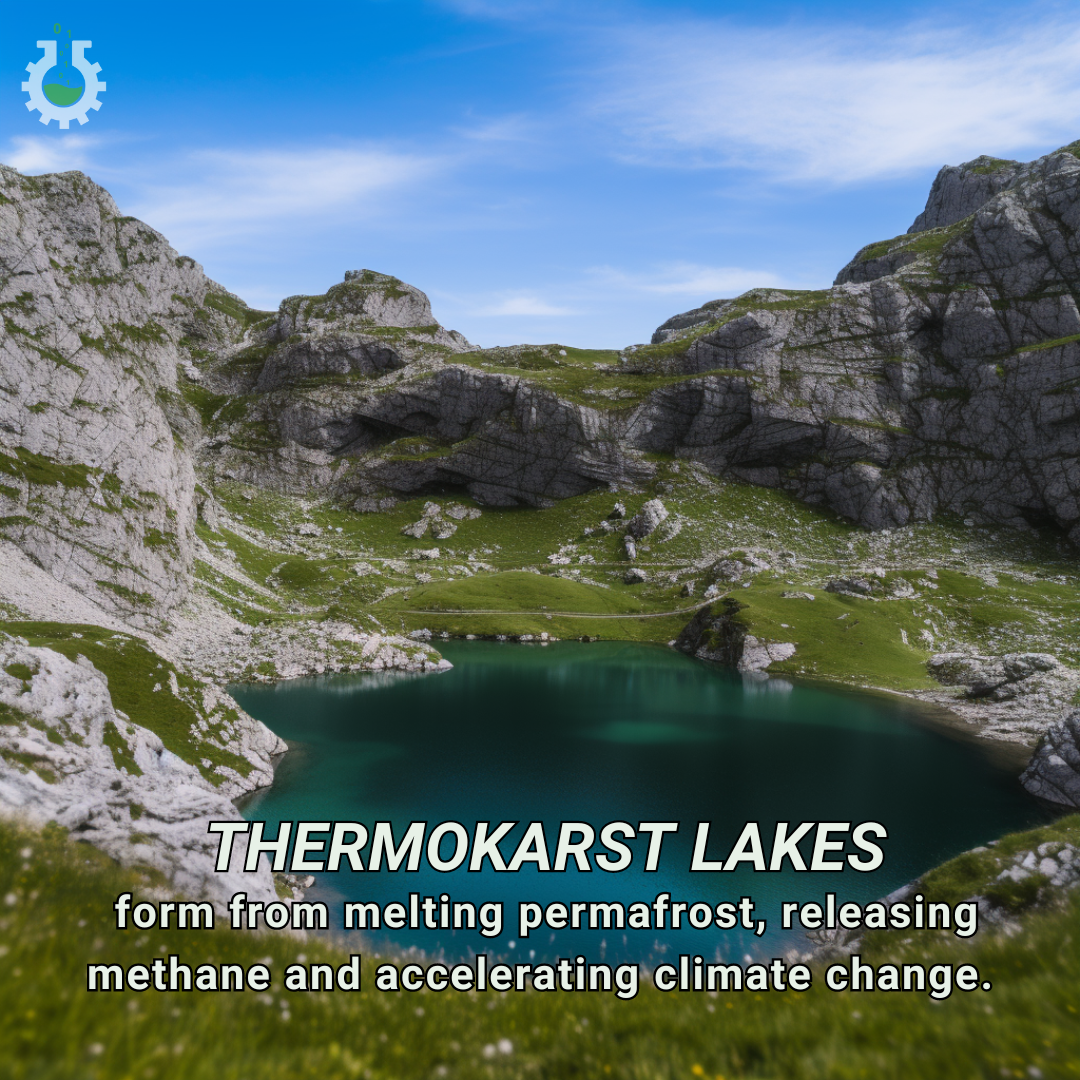July 16, 2024
Climate Change Poster Collection of the Day – Thermokarst Lakes
Book a Demo
Today’s Climate Change Poster Collection highlights Thermokarst lakes. A striking and increasingly significant feature in the Arctic and sub-Arctic landscapes, formed by the thawing of permafrost—ground that has remained frozen for at least two consecutive years. These lakes emerge when the ice-rich permafrost melts, causing the ground to subside and create depressions that subsequently fill with water. As global temperatures continue to rise due to climate change, the rate at which permafrost thaws is accelerating, leading to the formation of more thermokarst lakes. These lakes are not only altering the physical landscape but also playing a crucial role in the global climate system.
The permafrost regions of the world, which cover about 24% of the Northern Hemisphere’s land area, act as massive carbon sinks, storing an estimated 1,500 billion tons of organic carbon—nearly twice the amount currently in the atmosphere. When permafrost thaws, this organic material begins to decompose, releasing significant quantities of greenhouse gases such as methane (CH4) and carbon dioxide (CO2) into the atmosphere. Methane is particularly concerning because it has a global warming potential approximately 25 times greater than carbon dioxide over a 100-year period, and even higher over shorter timescales. The release of these gases from thermokarst lakes creates a feedback loop that exacerbates global warming: as more greenhouse gases enter the atmosphere, temperatures rise further, leading to more permafrost thaw and additional emissions.
The impact of thermokarst lakes on climate change is multifaceted. On one hand, the lakes themselves can absorb solar radiation, warming the water and accelerating the thawing of surrounding permafrost. On the other hand, the microbial activity in these lakes, which breaks down the organic matter, is heightened in warmer conditions, leading to increased methane production. This process is particularly intense in the anaerobic (oxygen-free) environments at the bottoms of these lakes, where methane-producing microbes thrive. The bubbles of methane that form can often be seen rising to the surface, where they are released into the atmosphere.
Moreover, the formation of thermokarst lakes can disrupt local ecosystems and traditional ways of life for indigenous communities. The changing landscape can affect wildlife habitats, leading to shifts in species distributions and impacting biodiversity. For indigenous peoples who rely on the land for subsistence, the transformation of their environment poses significant challenges to their livelihoods and cultural practices.
Understanding the dynamics of thermokarst lakes is crucial for climate scientists and policymakers. Advanced monitoring techniques, such as remote sensing and field observations, are being employed to track the development and expansion of these lakes. Climate models are also being refined to incorporate the complex interactions between permafrost, thermokarst lakes, and greenhouse gas emissions. These efforts are essential for creating accurate climate projections and developing effective mitigation strategies.
Mitigation efforts could include strategies to slow permafrost thaw, such as insulating the ground with vegetation or artificial materials, and reducing global greenhouse gas emissions to limit further warming. Additionally, restoration of drained thermokarst lakes, where feasible, could help to stabilize the permafrost and reduce emissions.
Thermokarst lakes are both a symptom and a driver of climate change, representing a significant and often overlooked source of greenhouse gas emissions. Their formation and expansion underscore the urgent need for comprehensive climate action, informed by robust scientific research and inclusive of the voices and knowledge of indigenous communities. Addressing the challenges posed by thermokarst lakes will be critical in our broader efforts to combat climate change and protect the planet for future generations.
Discover an inspiring collection of climate change poster.



